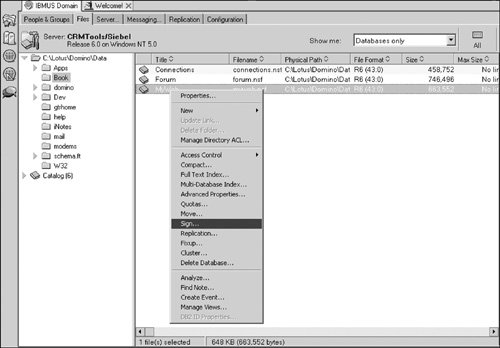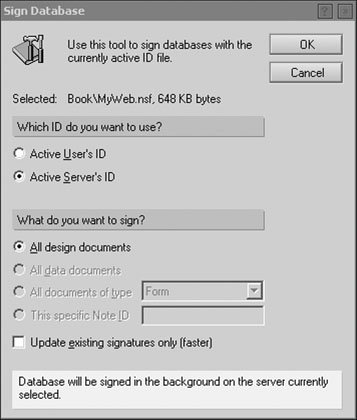How to Sign a Database
Signing a database is a process whereby the design of the database is updated with the digital keys associated with a server or the person doing the signing. You can also sign a database with a special Notes ID. This usually ensures that all executable instructionssuch as LotusScript, Formula Language statements, and agentshave the permission to run on the users workstation and on the server. This also helps to reduce the number of "Execution Security Alert" messages that are displayed to the user community. In many cases, the server administrator is responsible for signing the database or providing a special ID that can be used to sign the database. In either case, you should work with the Domino administrator to have the database signed.
The instructions provided in this section are provided for reference purposes, in case you happen to be the administrator as well as the developer, and to illustrate how to sign the database from the Domino Administrator client. In order to sign the database, youll need the Domino Administrator software installed and authority to access the Domino server. With these two items in place, complete the following steps to sign the database.
Depending on the size of the database and other activities on the server, it may take a few minutes for the process to complete. You will need to re-sign the database each time the design of the database is changed or prior to inheriting a database design using a master design and database templates.


